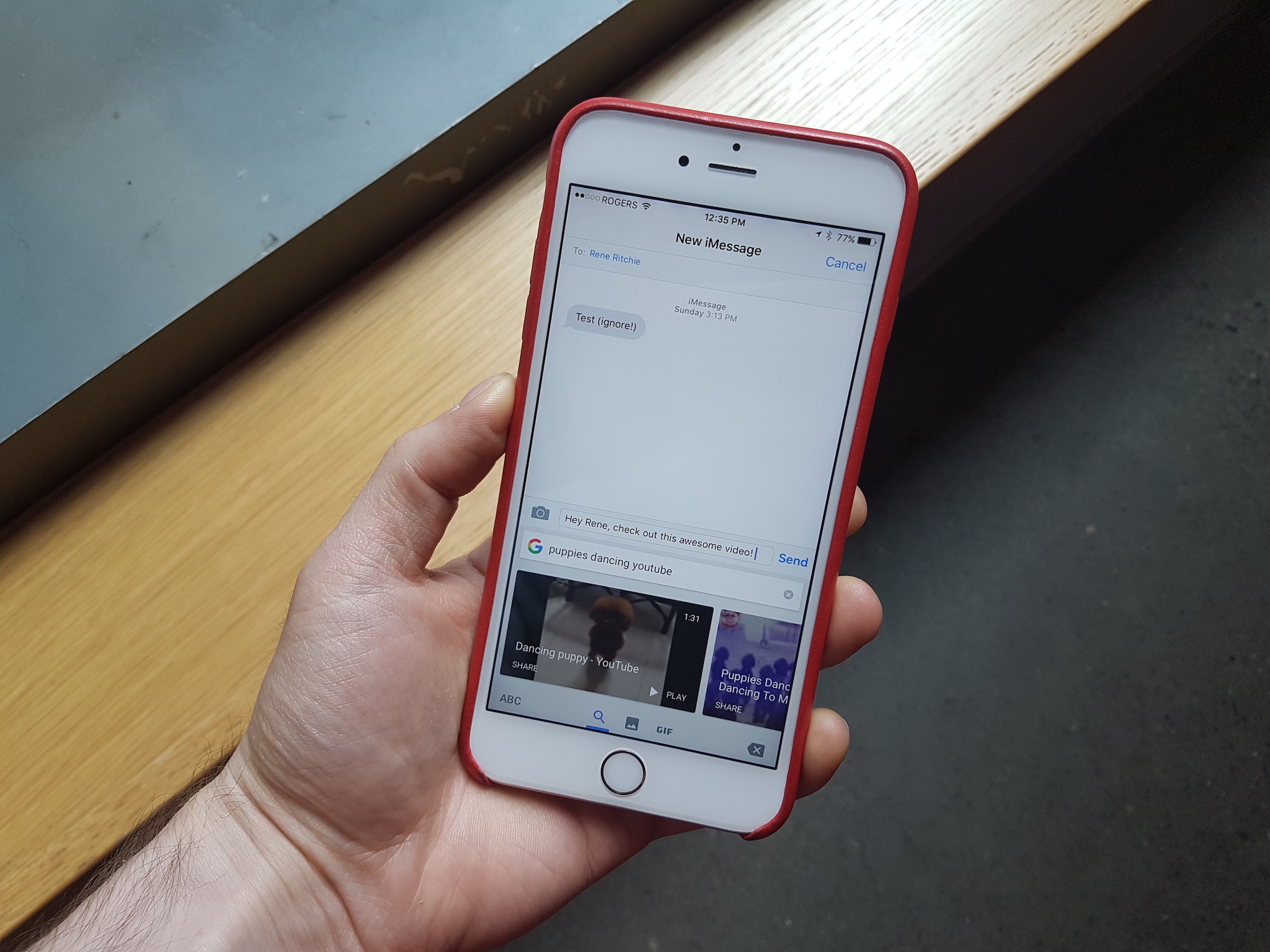Third-party keyboards find their audience in spite of Apple's neglect

There are a lot of very smart people working on something very boring: improving the virtual keyboard.
In the past month alone, we've seen two of Apple's biggest rivals, Microsoft and, most recently Google, release keyboards for the iPhone, a declaration of intent for where eyeballs — and fingers — are shifting.
The beginnings of a keyboard platform
When the iPhone was released in 2007, its virtual keyboard was heralded as revelatory for an industry unaccustomed to multi-touch on capacitive screens. What would happen when you could tap on multiple places at once and receive immediate feedback? As the company proved, it was this input mechanism, along with annual improvements to autocorrect and, later, predictive typing, that shifted the conversation from whether people could produce content on a smartphone to how much content they could produce on it. That story came to a head in 2014, when Apple near-undermined its own iPad mini with the iPhone 6 Plus, a smartphone with a screen larger enough, and a keyboard wide enough, to all but alleviate the pain of long-form typing.
But alongside the iPhone 6 Plus, Apple released iOS 8, a particularly developer-friendly iteration of the company's annual software update. One feature in particular, third-party keyboards, was at once lauded and subsequently overlooked, as it became immediately apparent its implementation was fraught with bugs. While Android mainstays like SwiftKey, Fleksy and Swype were quick to launch iOS versions of their popular keyboards, users balked at the frequency of bugs and the clumsiness of setup.
Nearly two years later, time and subsequent updates have softened those issues, but more than ever we're seeing companies investing in their potential. With today's release of the long-rumored GBoard, Google too has moved to where the puck is going — increasingly on top of existing apps, rather than the standalone variety.
"I see this is Google fighting back against Apple's Siri and Spotlight efforts to pre-empt Google searches in iOS (and to a lesser extent OS X)," says Jan Dawson, chief analyst at JackDaw Research. "This is a way to get Google search in a place where iOS users will see it regularly, before they even get to Spotlight." Despite Google's ever-present dominance in search, Apple has made a concerted effort to obviate the need for the traditional Google input box, both through improvements to Siri, and natural language search in Spotlight. iOS 9 even redirected users to a dedicated card on the far left of the home screen, and its successor, being unveiled in under a month, is likely to reinforce search's importance.
Deceptively simple
GBoard is deceptively simple: It looks nearly identical to Apple's default keyboard, inserting but a small Google search box above the QWERTY keys. But it is through that box Google's particular brand of disruption shows itself: a portable Google Now kiosk by which to find sports scores, music lyrics and news articles, all filtered through the company's tight algorithms.
Master your iPhone in minutes
iMore offers spot-on advice and guidance from our team of experts, with decades of Apple device experience to lean on. Learn more with iMore!
But as Dawson notes, third-party keyboards are still relatively niche on iOS, largely due to onerous setup requirements. "The big challenge," he says, "is that third party keyboards on iOS are not widely used, and people may well have privacy concerns about a Google keyboard in particular," noting that Apple's security-first sandboxing requirements force users into a difficult situation of acknowledging third-party data collection. "Getting many people to not just try it but make it their default keyboard will be tough."
Google does have advantages over its rivals in this particular case. Millions of people have been willingly giving it their personal information for years, in exchange for the free services, like Gmail and Maps, many take for granted. And because GBoards plugs into one's existing Google account, search history and personalized suggestions are de facto facets of GBoard's utility.
Of course, Google is, as all third-party keyboard makers are, limited by Apple's rules around what a third-party keyboard can and cannot be. While GBoard can provide search results in the form of cards, links, GIFs, and images, it can only copy those results to paste into the foreground app; it cannot, as I'm sure Google would prefer, open its own web browser. For that there is the dedicated Google app, and the revelation the company paid Apple a billion dollars to continue as the default search engine in iOS.
Wider acceptance
GBoard is not alone in its quest to interface directly with users. The keyboard is increasingly a platform unto itself, with services and plug-ins obviating the need to open a separate app. Slash Keyboard plugs into some 20 external products, from Foursquare to the New York Times to, yes, Google. Microsoft's Hub Keyboard takes a different approach, ostensibly making it easier to interface with its increasingly ubiquitous cloud services, OneDrive and Office 365.
We wish that Apple treated third-party keyboards better than it does, but in the meantime users are being offered compelling reasons to explore what they can do today. More importantly, it gives companies like Google and Microsoft a semblance of control, and an opportunity for disruption, on a platform that has until recently resisted such incursions.
Daniel Bader is a Senior Editor at iMore, offering his Canadian analysis on Apple and its awesome products. In addition to writing and producing, Daniel regularly appears on Canadian networks CBC and CTV as a technology analyst.

